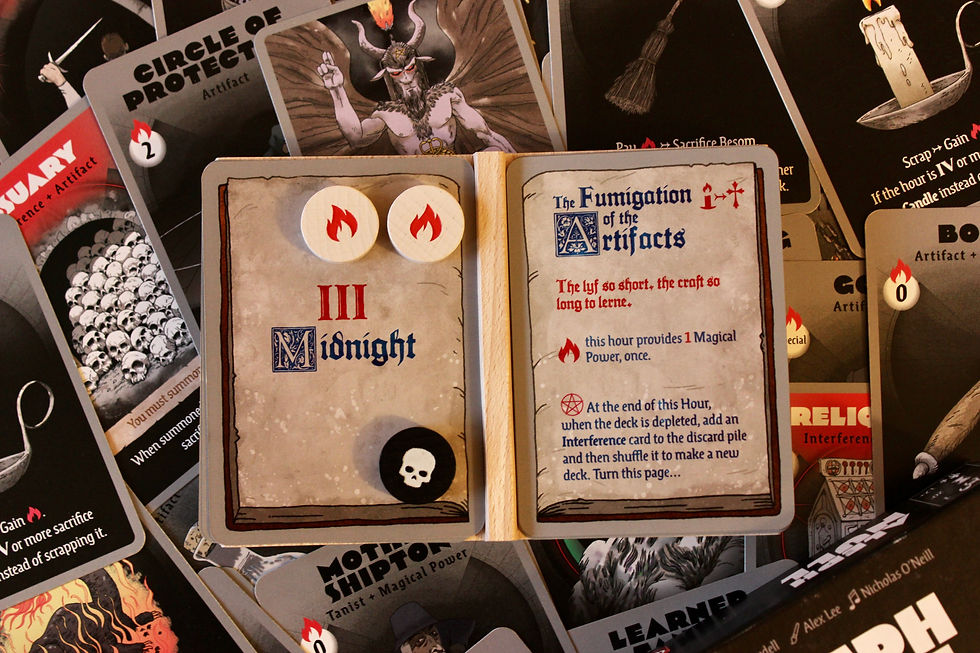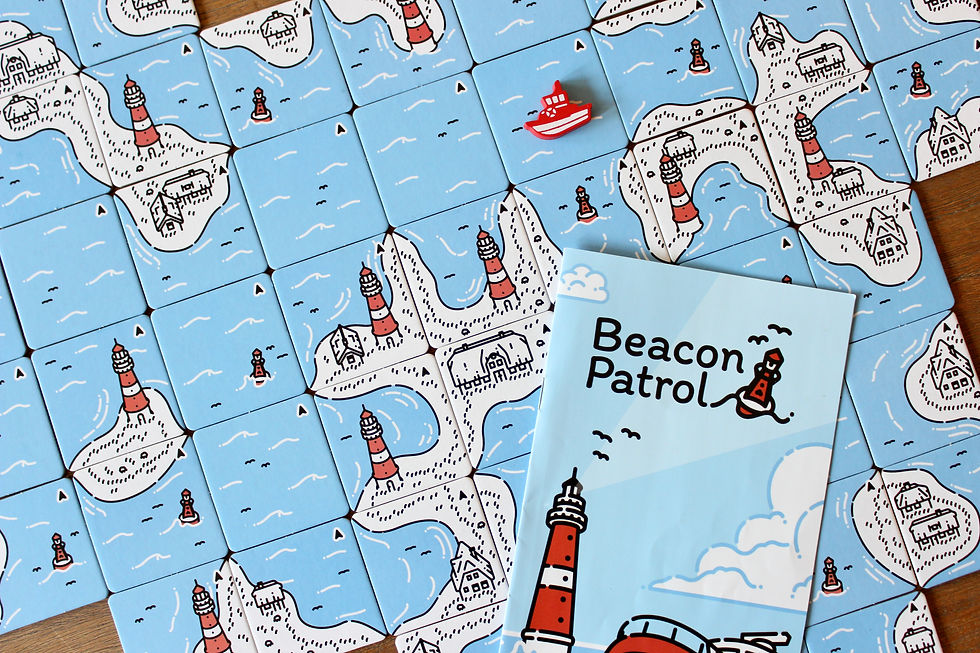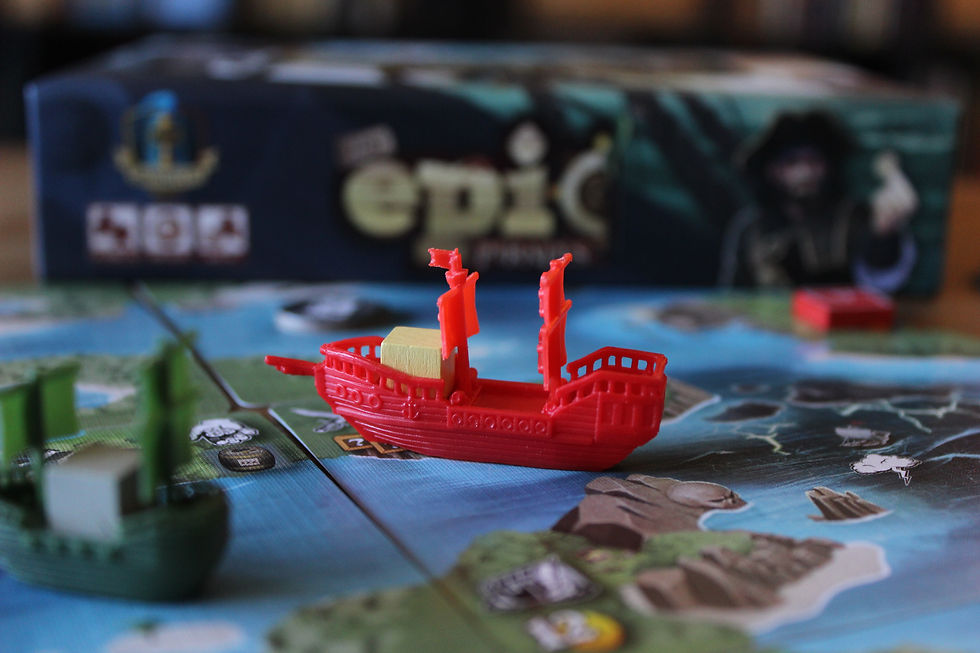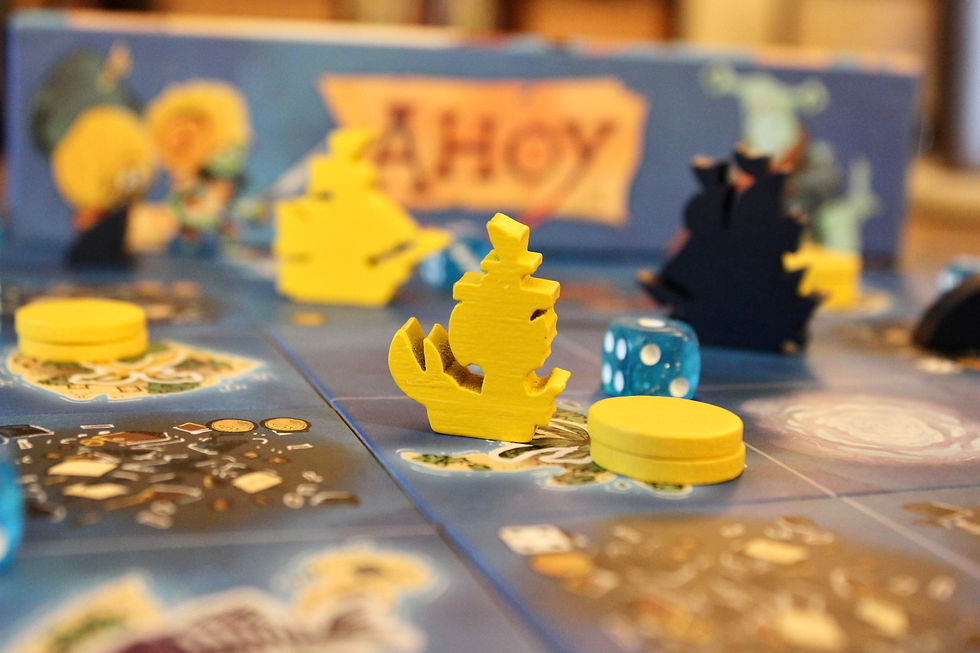In lieu of a new review this week, I’m reflecting on some of the incredible games I've played this past year. Last week was my birthday and I realized I played a lot of brilliant, new games in my 28th year on the planet. This list presents a few of my favorites.
Not all of the games in this list were released in the past 12 months, but they are all new—loosely defined as published within the past couple of years. But I did play them all for the first time during my last rotation around the sun, so they were definitely new to me.
When considering this list, there were a lot of enjoyable games that didn’t make the cut. That’s no knock against them, as these five stood out for various reasons—remarkable memories associated with them or exceptional gameplay experiences. Others were just such all-around magnificent games that I will be playing time and again for a long time. The order of the list should be taken with a grain of salt and if I were to write this again in two weeks, it may very well be completely different. But without further ado, here are the best five games I played for the first time in the final year of mid-twenties.
#5 — Cascadia
Designer: Randy Flynn
Artist: Beth Sobel
Publisher: Flatout Games
Player Count: 1 to 4 Players
Play Time: 30 to 45 Minutes

I was late to the party on this sleeper hit from 2021. Now it’s not uncommon to see it on the shelves at mass market big box stores like Target. I picked this one up recently from a Goodwill for $5 and even after only a handful of playthroughs, it is one of the best five games I have played this year—hands down. Given a few more plays, it might have been closer to the top spot.
Playing Cascadia carries me from the gaming table to the Pacific Northwest—a region I have visited a few times and am eager to return to. Beth Sobel’s gentle artwork paints a vivid picture of tranquil ecosystems and the many creatures that inhabit them. Laying the beautiful tiles on the table is a vibrant expression of creation and habitat vitalization.
For such straightforward gameplay, Cascadia brings such strategic depth to game night. My not-quite-a-board-gamer girlfriend even enjoyed this one, which is a positive remark on any game. But it also makes me think that she may enjoy other abstract strategy games with a low complexity:depth ratio. As I’m always in search of games we can enjoy together, and Cascadia definitely gives me some ideas for other titles to try.
I could spend hours exploring the woods, glaciers, rivers, and plains in Cascadia and the additional challenges to complete presented in the rulebook ensure a fresh experience every time this one is brought off the shelf for game night.
#4 — Aleph Null
Designer: Tony Boydell
Artist: Alex Lee
Music: Nicholas O’Neill
Publisher: Capstone Games
Player Count: 1 Player
Play Time: 15 to 30 Minutes

When I think of highly thematic games—where the components are designed to appear and function within the tone of the game, gameplay effects and abilities are specific to the theme, where the production value including artwork, sound, setting, and lore are coherent—Aleph Null immediately comes to mind.
Aleph Null is a pure 1-player game in which the player is cycling through hands of cards, performing a ritual to summon the demon lord Baphomet. Players will need to combine unique card effects from the deck of ritual components to generate enough Magical Power to successfully play the key components to summoning Baphomet before time runs out.
The game is cleverly paced by a progress clock, represented by the player flipping to the next page of the Book of Hours—the tome containing the scripts for the summoning magic. Each hour, the performance of the ritual becomes more perilous as agents of the Church attempt to interfere and stop your demonic rite. Can you summon the prince of Hell before dawn?
This small box packs a punch. Even on the simplest of the difficulty settings, the ritual is complicated to perform and often ends in failure. The game plays in just about 20 minutes so it can be a great time passer. But the inclusion of an originally-scored playlist of unsettling tunes means this is also a great game to dim the lights, que the playlist, and stay up until the early hours of the morning trying to bring destruction to Earth.
#3 — Beacon Patrol
Designer & Artist: Torben Ratzlaff
Publisher Shapes & Dreams
Player Count 1 to 4 Players
Play Time 30 to 45 Minutes

I first played Beacon Patrol in the demo room at the Game Manufacturers Expo in April of this year before the game’s official release. I had not heard anything about it before that, but I left the table knowing that when I could get my hands on a copy, this was going to be a staple on my shelf for a while to come.
Beacon Patrol checks a lot of boxes for me. I love games that take place on the water—spoiler, my # 2 and # 1 games also involve boats. The theme of oceanic and seaway travel lends itself well to gameplay about exploration and discovery, especially when the artwork supports it well. I also generally enjoy tile placement as a featured mechanic in any game. Building the board invites the player to participate in the act of creation.
As a solo title, it has also become one of my favorites to relax with—a turn-your-mind-off game without a lot of fiddling that manages to deliver deep, clever gameplay. It’s easy, but not simple. It diffuses tension, but is not uninteresting. Players are not made to feel as though each action must be optimized to enjoy gameplay, or even achieve victory. The act of playing Beacon Patrol is tranquil, beautiful, and thoroughly enjoyable.
I attribute that to the prioritization of gameplay experience over outcome, especially with the attention to aesthetics. Beacon Patrol is a beautiful game with a vibrant, bright table presence. The bold cartoonish art style and pastel blue coloration means the comic sans title font actually feels right at home. Each tile is a carefully drawn piece of an erratic puzzle and when laid down on the table according to the rules of the game, slots into a unique and special map of a happy little world that the players have not just explored, but created.
#2 — Tiny Epic Pirates
Designer: Scott Almes
Artists: Chip Cole, Ian Rosenthaler, Nikoletta Vaszi, and Felix Wermke
Publisher: Gamelyn Games
Player Count: 1 to 4 Players
Play Time: 30 to 60 Minutes

Don’t judge a game by the rulebook. If I had, I would have packed up Tiny Epic Pirates before I finished the first game and never touched it again. Missing labels, confusing diagrams, and gameplay icons completely without explanation make understanding this game out of the box a challenge. Fortunately once you get started the real challenge becomes an enjoyable swashbuckling race to bury your treasure.
Like the rest of the Tiny Epic series, Pirates takes tropes and icons from a distinctive genre—zombies, mechs, outer space—and transforms it into a condensed adventure strategy game. In this way, it hits all of the critical elements any good game about pirates should have: buried treasure, canons, scurvy crew, plunder, gold, and imperial interference. The reason this game is number two on my list is because it has all of those key components, balances them well, and the game still plays in about an hour (once you have figured out how it all works).
The solo variant is brutal and almost everything—from the modular board arrangement to the automated pirate’s rolls—needs to go your way for you to have a chance. The automated pirate is given significant advantages in every action compared to those of the player. So while the player is navigating around the board, trying to match up which action they will take this turn with the right type of tile they need to be on to perform that action, the automated pirate just gets to … do it. I find solo games to lack the buccaneering interaction that multiplayer games have and it becomes more of a race. Can you bury your treasure before the Solo Pirate?
#1 — Ahoy!
Designer: Greg Loring-Albright
Artist: Kyle Ferrin
Publisher: Leder Games
Player Count: 2 to 4 Players
Play Time: 45 to 75 Minutes

Ahoy is another knock-out asymmetrical strategy title from Leder Games, publishers of Root, Vast, Oath, etc. In this aquatic adventure, players take on the roles of Smugglers and naval admirals, inspired by creatures of the depths largely playing two different games on the same board. While the Smuggler factions are playing a pick-up-and-deliver game, racing against one another to score points and boons by successfully moving cargo around the board, the Mollusk Union and the Bluefin Squadron are playing an area control game, duking it out for control of tiles.
But of course, the two designs are intricately entangled with one another. Smugglers increase the value of tiles by delivering cargo and can hedge their bets on one of the two factions controlling that tile at game’s end in order to score more points. Similarly, the area control factions can protect their territories by establishing powerful holds with their crew.
The balance is stellar, the theme is right on with what I look for in a game, the wooden meeples are humorously clever, and of course Kyle Ferrin knocks it out with the artwork depicting these myriad sea creatures in 17th century nautical attire. It was one of the first games I played in my year 28 and it kept that top spot through 100 other games played—a game to keep pulling off the shelf for a while to come.


Comments